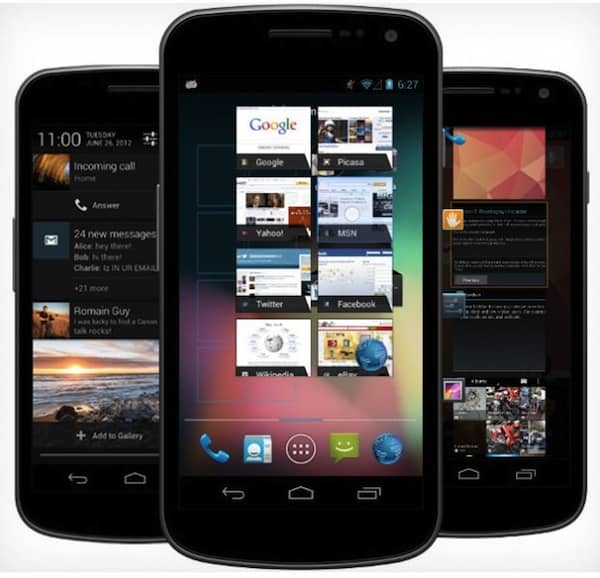Not only did Google unveiled the world's first Nexus tablet, the search engine giant took the wraps of their latest version of Android Jelly Bean last week. Rather than wholesale changes, the new update is very much anchored in the realms of gentle evolution, rather than major revolution - here are the main highlights.
UI Changes
Those of your who have an iPhone with iOS with know that Android has been a lonely second when it comes to a simple, easy to use UI – not only is it better, but it is far more responsive. Your average Android users accepts this as a trade-off for enhanced functions and multi-tsking – this is no longer the case with Android 4.1.
Google has gone to great lengths to make sure there’s no lag when opening up applications, especially when switching between apps – those of you who own an Ice Cream sandwich handset will know the multi-tasking menu takes a couple of seconds to load, with Jelly Bean it’s now instant.
There is of course, the odd stumble and pause, but they’ve bee reduced to the bare minimum and are usually the fault of third party apps that haven’t been optimised for 4.1 just yet. Android Jelly Bean’s UI is a major step in the right direction, it’s buttery smooth, and is one the most striking improvement over Ice Cream.
There's are a ton of background changes in Jelly Bean to make the OS even faster. For instance their intelligent widget placement, whereas running out room caused issue before, the OS allows for place as many as want and it will handle the arranging much better.
Notifications
Perhaps the biggest change in Android Jelly Bean lies in the notifications drop down menu. Google has overhauled the existing Android notification system and made it even more useful. You can now see additional information on emails, including a list of your unread messages. By holding two fingers over an email and pulling them apart, you can get an expanded view, showing the contents of the message without even having to open up Gmail.
It’s also possible to react and respond to notifications without actually having to fire up the relevant application. For example, if you take a screengrab, it appears in the notifications panel with a link to share it instantly.
Not many third-party apps support this feature at the time of writing, but that’s understandable when you consider that Jelly Bean isn’t technically out yet. Once July comes around, expect to see many popular apps boasting quick-access functions direct from the notification bar.
Google Now
Google Now is the big one, though. This is a system wide update based on your location, search history and personal preferences. With Google Now, when you search it delivers results that are tailored to your locations, previous searches and personal preferences.
As soon as Google Now opens, it bombards you with useful info. This is displayed as a series of cards, which can be scrolled through vertically and dismissed with a horizontal swipe if you feel they’re not relevant. This is the clever bit — these cards are context and location sensitive, and also incorporate your web history to offer up the kind of data you genuinely need on the fly – the more you use Google and it’s service, the more Google Now will begin to help you.
Text Input
Text-input has seen a overhaul aimed at improving typing - so now the OS will begin to learn you're typing habits and will know words you like to use and offer them up as suggestion more often.
Another welcomed feature is offline voice typing, Hugo Barra confirmed they company has spent time shrinking Google Speech Recogniser, so they can bake in directly into the OS. This means you can now do speech-to-text without requiring a pesky web connection.
Camera
The Gallery application has been given a new lick of paint, you'll now be able to view pictures in a "Film Strip" view - just swipe the pictures you don't like and they're deleted from the phone.
Android Beam
Android sharing functionality Beam has been given a few cosmetic changes, you can now send photos and videos simply by bumping two Beam device together. To connect you handset to a NFC wireless speaker all you have to do is tap the two devices together to pair them and start streaming.
Release date
Android Jelly Bean will be available in mid-July, initially shipping to Galaxy-brand handsets.
Conclusion
Google has seemingly finally recognised that the quality of the user experience is just as important as a raft of features and functions. It’s still to early to say quite how good Android Jelly Bean is, this is because by the time it goes to other handsets with new skins and slight cosmetic changes it might have lost a bit of it’s sheen, but from our early impression it’s the best OS Google has made.
Hopefully every new Android device will benefit from the vastly superior performance and Jelly Bean’s enhanced functionality – which bodes well for the future of Google’s OS.

